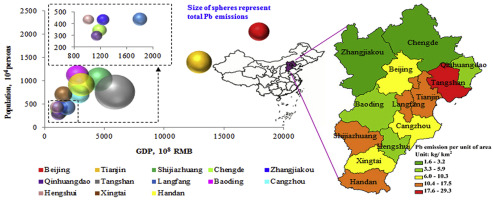当前位置:
X-MOL 学术
›
Atmos. Environ.
›
论文详情
Our official English website, www.x-mol.net, welcomes your feedback! (Note: you will need to create a separate account there.)
A high-resolution emission inventory of anthropogenic trace elements in Beijing-Tianjin-Hebei (BTH) region of China
Atmospheric Environment ( IF 5 ) Pub Date : 2018-10-01 , DOI: 10.1016/j.atmosenv.2018.08.035 Chuanyong Zhu , Hezhong Tian , Yan Hao , Jiajia Gao , Jiming Hao , Yong Wang , Shenbing Hua , Kun Wang , Huanjia Liu
Atmospheric Environment ( IF 5 ) Pub Date : 2018-10-01 , DOI: 10.1016/j.atmosenv.2018.08.035 Chuanyong Zhu , Hezhong Tian , Yan Hao , Jiajia Gao , Jiming Hao , Yong Wang , Shenbing Hua , Kun Wang , Huanjia Liu

|
Abstract An inventory of anthropogenic emissions of twelve hazardous trace elements (HTEs): Hg, As, Se, Pb, Cd, Cr, Ni, Sb, Mn, Co, Cu and Zn, in the Beijing-Tianjin-Hebei (BTH) region of China is developed for 1980–2012 by using inter-annual dynamic emission factors, which are determined with S-shaped curves. Our results indicate that the BTH regional total emissions of twelve HTEs have rapidly increased from 2190.0 tons in 1980 to 8704.6 tons in 2012. Coal combustion by industrial boilers, ferrous metal smelting, glass production and brake wear are identified to be the primary sources of regional HTE emissions. Beijing is the largest Sb emitting city with about 20.0% of regional total emission. However, for other eleven HTE emissions, Tangshan represents as the highest emitting city, accounting for about 15.3–35.9% of the BTH totals. The peak HTE emission intensities (emissions per square kilometer) are mainly distributed over the grid cells of central and southeastern of the BTH region, especially for the urban and rural-urban border zones of cities. Generally, monthly variations of HTE emissions in the BTH region exhibit seasonal peak to valley characteristics. The overall uncertainties of the newly developed inventory are estimated to be from −35.7% to 36.4%. Finally, integrated countermeasures for emission reduction of HTEs are proposed.
更新日期:2018-10-01



























 京公网安备 11010802027423号
京公网安备 11010802027423号